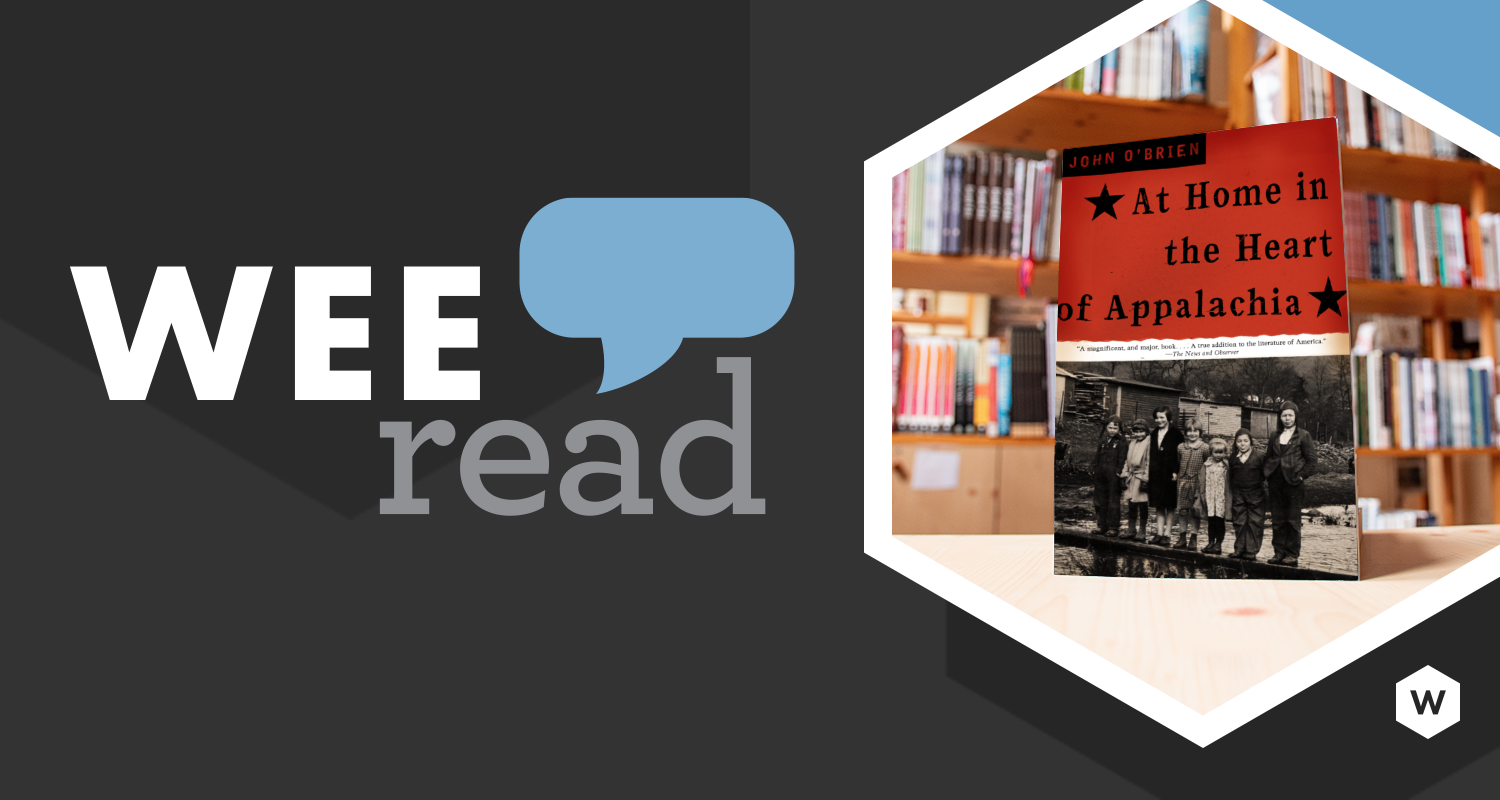A poignant memoir of family and place, At Home in the Heart of Appalachia’s opening chapter begins with author John O’Brien traveling for his father Jim’s funeral. A strained relationship with his father and his family has led O’Brien to forgo the funeral itself, so he instead travels to his father’s hometown in Piedmont. Despite their estrangement, O’Brien wants to pay homage to the father he loved. With this anecdote, O’Brien hooks readers from the very first page with a personal story of family and belonging in an oft-misunderstood region.
Born to two natives of Piedmont, West Virginia, O’Brien was raised in Philadelphia and periodically visited family in West Virginia throughout his youth. Poverty and a family tragedy had prompted O’Brien’s father to move himself and his wife to Philadelphia, where they had ten children. O’Brien notes “I have spent my life leaving Appalachia and coming home again; if I belong anywhere in the world, it is here. Despite fifty years in southwest Philadelphia, my father belongs here, too.” His father had made a life and a family in Philadelphia, but it was Piedmont that had shaped for him for better and worse. O’Brien recalls that his father seemed excited yet anxious whenever he took his children to West Virginia. His upbringing no doubt caused this anxiety and led to his “Appalachian fatalism,” which O’Brien defines as “a profound sense that you are fundamentally inferior and that life is absurd and hopeless.” It is that Appalachian fatalism that would later cause the greatest rift between father and son.
Despite his father’s fatalism and events that would later strain the relationship between them, O’Brien remembers his father fondly. He said “But I loved my dad. He took me hunting and fishing, taught me to love language, to watch birds, to cook, and that it was all right for a man to be gentle.” O’Brien recognizes that his father gave him many things, including a love of subsistence fishing that O’Brien calls “the closest thing to religion in my life.” O’Brien’s descriptions of landscape and wildlife in West Virginia are among the most memorable parts of the book, observed and filtered through a man that is, in turn, a naturalist, a pragmatist, and a poet.
O’Brien became the first in his family to attend college, a decision that his father disapproved of, and chose West Virginia University. It is here he meets his wife-to-be, Becky, and after college the pair travel across the country, from Alaska to New York, before settling down in Franklin in Pendleton County. O’Brien makes a living in Franklin through teaching and writing. He suggests to his editor a book about Appalachia, then realizes he doesn’t know what that would look like. Despite a lifetime spent “leaving and coming home again,” Appalachia is foreign to O’Brien. He and others in his life consider themselves West Virginians and don’t know what to do with the title of Appalachian. What does it mean to not only be Appalachian, but to reside in West Virginia, “the heart of the heart of Appalachia”?
To answer this O’Brien becomes involved in the day-to-day life of Franklin. A farming community with a fair share of what O’Brien calls “come-heres” (himself included), Franklin had been spared the outside influence of the coal industry because the town sat upon limestone. As such, Franklin was able to remain a subsistence culture longer than other regions of Appalachia that were thrust into consumer culture by the timber and coal industries.
Even so, Franklin’s pastoral way of life is disappearing: the shifting landscape of livestock and agriculture makes family farms nigh impossible to sustain. O’Brien meets with several Franklin residents trying to keep it alive by raising sheep and cattle, but it increasingly yields little to no profit. O’Brien observes that farming “takes intelligence, all of your senses, and no small amount of luck.” But there is beauty in this way of life, which O’Brien writes about in a way that is sympathetic without being patronizing or romanticizing.
Throughout the story of his own life, O’Brien weaves the story of Franklin and the state as a whole. Told through anecdotes, observations, and bite-sized chunks of history, O’Brien creates a narrative that is never dull and always genuine. Tracing the region’s history all the way back to 1750, O’Brien shares some of the events that led to the creation of “West, by God, Virginia.” This includes a history of the region’s industries, primarily timber and coal, the state’s unremitting missionary presence, and the myth-making of Appalachia that emerged from both.
Marketed as a memoir, At Home in the Heart of Appalachia transcends its genre. It is a memoir, history book, and travelogue that is heartwarming, informative, and entertaining in turn. O’Brien is a scholar and entertainer who has written a book that shifts seamlessly between the story of his own family and the story of his home. The perfect blend of “come-here” and native, O’Brien is able to paint a full picture of the region, informed by personal experience and the works of Appalachia scholars. He approaches every topic—his father, his family, his neighbors, his region—with fairness and compassion. O’Brien is a natural storyteller who has done the region a great service by putting pen to paper. This is truly one of the most important books you can read about West Virginia.
• Raised in Wellsburg, West Virginia, Anna Cipoletti is a proud alumna of Mount de Chantal Visitation Academy, West Liberty University and Kent State University. She received a Bachelor of Arts in English Literature from West Liberty in 2014 and a Master of Library and Information Science degree from Kent State in 2017. Anna has made a career out of a lifelong love of books and works full-time at Bethany College as a librarian and parttime as a bookseller and book reviewer. She resides in Beech Bottom with her sister and two Siamese cats. A nature enthusiast, Anna often spends her free time visiting one of West Virginia’s many beautiful parks or kayaking along Buffalo Creek.



